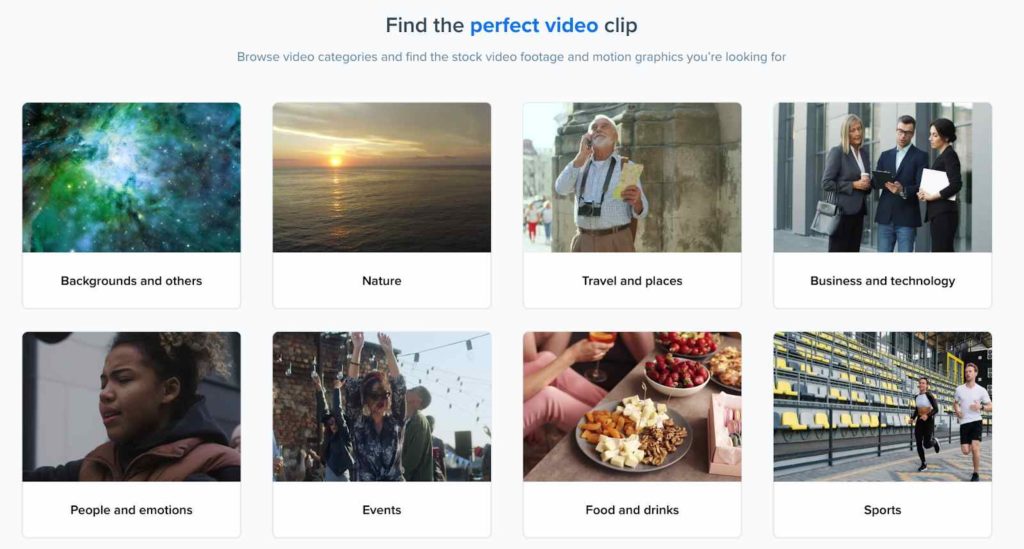
Compelling social media content can grab attention in seconds, leading viewers to take action like subscribe or buy. Yet, crafting this content demands significant time and resources. That’s why many brands decide to automate content creation.
As your brand grows, the demand for consistent content across platforms escalates, potentially taxing your resources. By automating content creation, you can optimize processes and free up your team’s bandwidth for other creative and strategic digital marketing efforts.
This article delves into how to automate content creation, its advantages, other applications, and tips for refining the automation process.
Table of Contents
4 Benefits of Automating Content Creation
Automating content creation refers to using AI tools or software to streamline aspects of the content marketing creation process, from the planning to the monitoring and managing of digital content.
It targets and simplifies repetitive tasks and works for content creation for social media and other types of content, like articles, blogs, videos, and images.
Below are several benefits of using tools that automate content creation:
#1 Create Personalized Content
AI tools provide a unique advantage, allowing you to automate content creation with more creative control. Instead of briefing writers and designers, you can provide the tool with as much detail as possible, rendering your desired output.
AI algorithms can track user preferences and behavior regarding their content consumption. Tools can help you segment your audience accordingly and provide insights that can help craft tailored content to improve user experience and engagement.
For instance, you can leverage AI images to produce visuals consistent with your brand and resonate with your audience.
#2 Improve Cost Efficiency
When you automate content creation, not only can you save on freelance fees and other expenses, but the tools also do the heavy lifting in the content creation process, leaving you with doing the final touches.
This significantly cuts the time and effort needed for manual tasks, allowing you to dedicate your time to tasks that necessitate human expertise, like creative ideation and strategic planning.
#3 Make Data-Informed Decisions
You can use automation tools that provide insights on content performance to continually improve content strategies and see how well your content performs. These tools analyze viewer engagement, suggesting improvements based on real-time data.
#4 Ensure Consistent Branding
AI tools can amplify your brand identity across platforms by creating content that aligns with your brand voice, ensuring a consistent tone and style. This uniformity lets your brand stand out and strengthens brand recall.
How to Automate Social Media Content Creation
Content automation can be integrated anywhere within the content creation process, from the initial research about your audience to creating content and monitoring their performance.
You can harness AI content generators to create diverse forms of content, including text, visuals, and videos, which can help optimize your social media content and attract potential customers.
Here are some ways to help automate your content creation for social media.
#1 Keyword Research
Choosing the right topic for social media content necessitates thorough keyword research. AI-driven keyword research tools can pinpoint trending search terms, generate daily content ideas, and provide the data you need to create content that matches your audience’s needs and interests.
#2 Use a Free AI Content Generator
Many tools exist to help users craft everything from blog drafts and ad copy to Instagram posts and captions. The AI text generator is a stellar example of the innovation sweeping through automated content creation.

Wepik AI writer tool
AI content generators boast varied interfaces and features. They usually ask you to provide a prompt for the content output. Also, some feature tone options, rewriting capabilities, and options to shorten and expand the generated text, delivering a customized experience.
#3 Use Free Videos
Video content’s undeniable impact is clear from its high engagement on social media. While full-scale video productions are a choice, they can be costly and time-intensive for many brands.
Luckily, many platforms offer free stock videos to elevate your brand’s visual narrative. Simply enter relevant keywords and apply filters to locate the perfect stock footage tailored to your social media needs.

Freepik video platform
Search for relevant keywords, apply filters, and download the ideal footage for your needs. After checking the license, you’re set to edit and post on platforms like Instagram, TikTok, and YouTube.
#4 Repurpose Content
Your brand probably contains a wealth of pre-existing content, whether developed or published. By utilizing AI tools that automate content creation, you can breathe new life into these assets, generating fresh content pieces.
Whether it’s a short post, an infographic, or even a video, these new materials can boost brand awareness and drive traffic to your site.
#5 Utilize Content Templates
Preparing a content plan often entails lining up various content types for regular posting. So ,with tools that offer content templates, you can maintain a uniform format, structure, and style across all your content, ensuring consistency.
Other Applications of Automated Content
Automation isn’t just limited to social media. In fact, you can automate content creation and integrate it into websites or blog posts. These include:
- FAQ Sections: Populate FAQs with automated content based on common user queries.
- Testimonials and Reviews: Gather and display user feedback.
- Lead Generation: Use automated content for landing pages, email campaigns, and other marketing materials.
- Customer Service: Sift through inquiries to answer frequently asked questions and resolve issues with automated content.
- Recommendation Systems: For e-commerce sites or blogs, provide personalized recommendations based on user browsing preferences and history.
- Product Descriptions: Create consistent and accurate product descriptions for e-commerce sites and online stores.
- Email Marketing: Automate content creation for email drives to promote new products, nurture existing leads, or offer new deals to your audience.
Tips For Automating The Content Production Process
Here are a few tips for automating the content production process:
#1 Develop a Plan and a Strategy
Create a clear content plan aligned with your goals. This will guide the type of content, publishing frequency, and tools required. Then, formulate a content strategy that aligns with your overall objective to steer your automation efforts.
#2 Analyze Your Current Processes
Evaluate your current content production process and see which steps or tasks can be augmented with automation.
#3 Use the Right Tools
Given the plethora of free AI content generators, keyword tools, AI meeting summary tools, and other AI-powered tools, carefully assess and select ones tailored to your needs and budget.
So, prioritize scalability, system integration, and user-friendliness to ensure a smooth integration into your workflow and easy adoption by your team.
#4 Use Them to Help Humans
Leverage these tools and let them do the heavy lifting; content automation tools should help humans and not replace them. You can also set up a clear review process involving human input to fact and quality checks on the automated content.
Similarly, ensure the team is ready to adopt these content automation tools and make the most of the technology.
#5 Prioritize Your Audience
When you automate content creation, your primary focus should be to learn about user preferences and behaviors to ensure you deliver content that truly resonates with your audience and addresses their queries.
This helps build your brand and grow your following on social media.
#6 Test and Refine
Once you’ve started to automate content creation, it’s essential to test and refine your process. This will help you ensure that you’re getting the results you want. You should also implement quality control measures to check if your output meets your brand’s standards.
Conclusion
Automating content has become a strategic imperative. By harnessing AI-powered tools, your brand can automate content creation for a consistent, data-driven output that aligns with your audience.
Meanwhile, genuine content still relies on human insight and creativity. Therefore, when leveraged correctly, these tools boost brand efficiency, cut costs, and enhance service and product quality—allowing you to achieve more with less effort!

